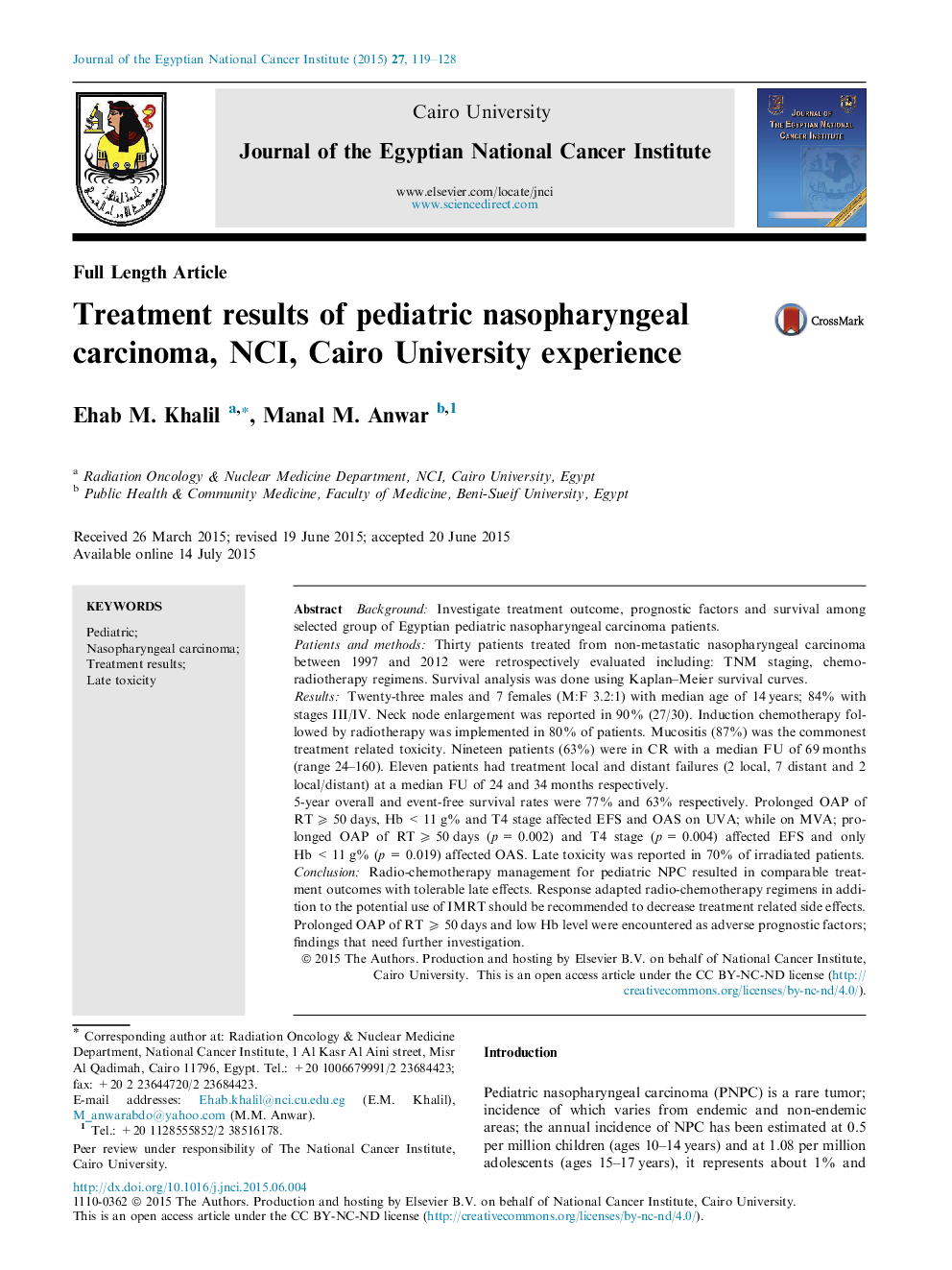| Article ID | Journal | Published Year | Pages | File Type |
|---|---|---|---|---|
| 3988958 | Journal of the Egyptian National Cancer Institute | 2015 | 10 Pages |
BackgroundInvestigate treatment outcome, prognostic factors and survival among selected group of Egyptian pediatric nasopharyngeal carcinoma patients.Patients and methodsThirty patients treated from non-metastatic nasopharyngeal carcinoma between 1997 and 2012 were retrospectively evaluated including: TNM staging, chemo-radiotherapy regimens. Survival analysis was done using Kaplan–Meier survival curves.ResultsTwenty-three males and 7 females (M:F 3.2:1) with median age of 14 years; 84% with stages III/IV. Neck node enlargement was reported in 90% (27/30). Induction chemotherapy followed by radiotherapy was implemented in 80% of patients. Mucositis (87%) was the commonest treatment related toxicity. Nineteen patients (63%) were in CR with a median FU of 69 months (range 24–160). Eleven patients had treatment local and distant failures (2 local, 7 distant and 2 local/distant) at a median FU of 24 and 34 months respectively.5-year overall and event-free survival rates were 77% and 63% respectively. Prolonged OAP of RT ⩾ 50 days, Hb < 11 g% and T4 stage affected EFS and OAS on UVA; while on MVA; prolonged OAP of RT ⩾ 50 days (p = 0.002) and T4 stage (p = 0.004) affected EFS and only Hb < 11 g% (p = 0.019) affected OAS. Late toxicity was reported in 70% of irradiated patients.ConclusionRadio-chemotherapy management for pediatric NPC resulted in comparable treatment outcomes with tolerable late effects. Response adapted radio-chemotherapy regimens in addition to the potential use of IMRT should be recommended to decrease treatment related side effects. Prolonged OAP of RT ⩾ 50 days and low Hb level were encountered as adverse prognostic factors; findings that need further investigation.
